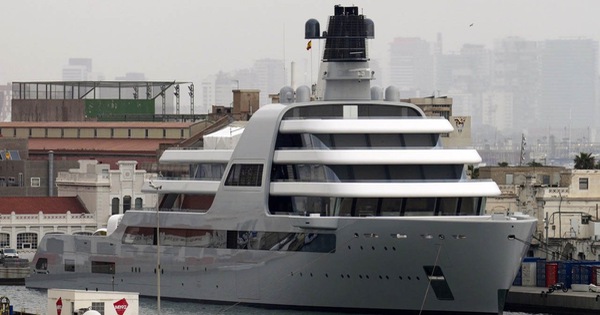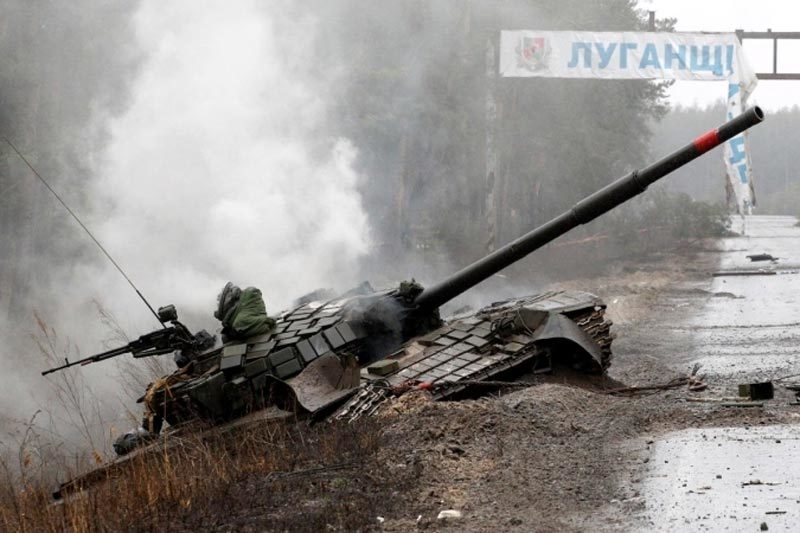The situation of the battlefield is completely new, when Russia rotates the fighting axis to eastern Ukraine, prompting the West to increase the supply of heavy weapons to Kiev.
Pentagon spokesman John Kirby said on April 11 that Russia is strengthening its forces around the Donbass, with a large military convoy approaching the city of Izyum, but has not launched an operation in eastern Ukraine, but is just “repositioning forces” in this area.
The movement of troops to eastern Ukraine was carried out by the Russian military after announcing the completion of the first phase of a special military operation and the withdrawal of most of its forces from the outskirts of Kiev and northern Ukraine.
The Kremlin described this decision to withdraw troops as a “show of goodwill to negotiate” with Ukraine, but two weeks have passed since the meeting in Istanbul, Turkey on March 29, the delegations of the two countries have not yet held further. any other face-to-face meeting. Observers say this is the “calm before the storm”, when both sides are trying to strengthen their forces and equipment to prepare for the upcoming decisive battles in eastern Ukraine.
Kiev officials and their allies and experts estimate that in the coming battles in the east, the Ukrainian armed forces will face completely different conditions and forms of fighting than in the first stage of the war. first.
General Mark Milley, chairman of the US Joint Chiefs of Staff, said last week that Ukraine had succeeded in the early stages of the war, by holding back Russian forces in the north thanks to a combination of urban and tactical combat. guerrilla-style fighting, harassing the enemy’s supply lines.

Ukrainian policemen patrol in the village of Dmytrivka, western Ukraine, on April 2, after Russian forces withdrew from the area north of Kiev. Image: AFP.
However, the situation on the battlefield in Donetsk and Luhansk in eastern Ukraine will be a different story, as battles take place in open terrain, causing Ukrainian forces to lose their combat advantage in urban areas. Russia’s logistics lines are also no longer in the “open flank” state as before, as Russian forces and the separatists have built a stronger foothold in the Donbass.
Both Ukrainian and Western defense officials believe that with the new battlefield situation, Kiev will need a lot of heavy weapons, not stopping at anti-tank missiles and man-portable air defense missiles like over the past month.
Ukraine’s Foreign Minister Dmytro Kuleba last week stressed that the country needs the West to support more fighters, armor, land-based anti-ship missiles and heavy air defense complexes. He warned that the next phase of hostilities in eastern Ukraine would involve battles on a scale similar to World War II, with thousands of tanks and artillery batteries involved.
“We still have to depend on our partners for the supply of weapons. Unfortunately, we do not have enough weapons to end the conflict sooner,” Ukrainian President Volodymyr Zelensky said on April 11. “If we had enough heavy armor and artillery, we could have broken Mariupol’s siege.”
Zelensky warned that if the West does not quickly supply more heavy weapons to Ukraine, they will “waste the time and lives” of the Ukrainian people.
Western intelligence predicts that Ukraine has only a few weeks left to increase numbers and deploy heavy weapons to the eastern front. Russia also needs a similar time to redeploy forces, add weapons and equipment for the offensive in Donbass.
Once the goal of complete control of the Donbass is achieved or even reaching the right bank of the Dniper, Russian forces will have more advantages to change tactics, consolidate defenses and control on the ground, enter the phase The conflict lasts a long time and consumes the opponent’s resources.
Ben Hodges, former commander of US troops in Europe under Presidents Barack Obama and Donald Trump, said Ukraine did not have much time to rearm before the next phase of hostilities began.
“The next three weeks are pivotal, potentially determining whether Ukraine has a chance to halt an advance by Russian forces or the fighting will drag on for months or years,” he said.
NATO is focusing on assessing whether the fighting in Ukraine has a chance to end quickly, or will turn into a protracted armed conflict like in Syria, a Western official told Reuters. Bloomberg. NATO Secretary General Jens Stoltenberg last week said that the Western military alliance “needs to be ready to supply more weapons” to Ukraine and member states are aware of how urgent the situation is.

Ukrainian soldiers on armored vehicles move through the city of Severodonetsk, in the Donetsk Oblast in the Donbass region, April 7. Image: AFP.
Because a series of economic and diplomatic sanctions from the US and its allies have so far barely changed Russia’s strategic calculus, British Armed Forces Secretary James Heappey said that the West should pay more attention to aid. weapons, to create a balance of forces on the battlefield in eastern Ukraine.
NATO was initially hesitant to supply Ukraine with heavy weapons, especially after Russia threatened to consider Western arms shipments to Kiev a “legitimate target”.
However, as the risk of a fierce war in eastern Ukraine grew, Western countries began to be less reticent about aid with heavy weapons to Kiev. European defense officials told Washington Post that the West is making a more detailed assessment of the number and types of weapons sent to Ukraine, due to the fact that the battlefield has changed.
According to these officials, Ukrainian forces have demonstrated their combat capabilities, at the same time demonstrating their ability to hold back the Russian army and adapt well during training in the use of Western weapons.
“In the beginning we mainly supported weapons that the Ukrainian army could use immediately. Now we realize that they need more modern weapons,” said Lithuanian Deputy Defense Minister Margiris Abukevicius. shall.

The flashpoints of fighting in eastern Ukraine. Click on the map to see details.
During a surprise visit to Kiev on April 9, the British Prime Minister Boris Johnson agreed to send 120 more armor and anti-ship missiles to Ukraine. Sources familiar with the military revealed that the Czech Republic will provide at least five T-72 tanks, five BMP-1 armored vehicles and some Strela-10 close-in air defense systems to Ukraine, according to reports. Reuters.
Australia also announced plans to send 20 Bushmaster armor at the request of President Zelensky, with an aid package of weapons and anti-tank ammunition worth about 20 million USD. Also last week, Slovakia supplied Ukraine with a S-300 long-range air defense missile system, and also received the Patriot air defense system from NATO.
The US has announced to send Switchblade unmanned combat aircraft, and also provide more Javelin anti-tank missiles to Ukraine. The US Department of Defense is also considering a plan to sell M1 Abram tanks to Eastern European countries to convince them to transfer tanks manufactured in the Soviet era to Ukraine.
US National Security Adviser John Sullivan revealed that the Pentagon is considering adding a new arms aid package to Ukraine, including many modern weapons that are “unprecedented” and will have the ability to make an impact. significantly with the situation of the battlefield in eastern Ukraine.
These moves are expected to create the necessary push for Eastern European countries to increase their aid to Ukraine with heavy weapons. Deputy Defense Minister of Lithuania Abukevicius said that becoming the first country to send tanks to Ukraine is always a difficult choice. He said the effort to aid in heavy weapons would be easier once there was an “icebreaker” pioneer.
“With increasingly drastic decisions from the United States and the Czech Republic, Western countries can now start the race to supply heavy weapons to Ukraine, to determine the battlefield in the east of the country.” William Alberque, director of strategy, technology and arms control at the UK’s International Institute for Strategic Studies (IISS).
Trung Nhan (According to Bloomberg, NY Times, Washington Post)
at Blogtuan.info – Source: vnexpress.net – Read the original article here



